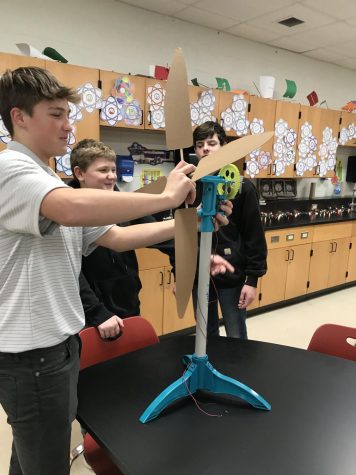The Solar Kits
Have you ever wanted to see how solar panels work? Well, the 8th grade science class got the opportunity to experience this first hand. The solar kits were a STEM project we were assigned to create. The project was to build and test mini solar panels. We built them because it made us understand how solar energy worked better. Building them brought along a fun challenge. The kits included wires, wooden boards, bolts, nuts, foam tape, Velcro tape, and a mini solar panel. The tools that were needed to complete the Solar Station were screwdrivers, scissors, and wire stripers/cutters.
First came the building process. This was the largest part of the project. There were many different steps that went into the final product. We learned how to strip wires and connect them. We had to use problem solving skills to make it work. We also had to connect pieces of thin wood together with bolts and nuts. The building process was the most challenging, but was a good learning experience.
After we finished the building, we got to test them. We first tested them under a lamp. We also did a worksheet where we had to connect multiple solar stations together to make series and parallel circuits. After that, we went outside to do more testing. We went out for about a week to see how much energy we could collect from the sun. We collected data over the sun’s voltage and how much voltage we got from the angle of the solar panel.
This solar kit project has to do with STEM because we used science, technology, engineering, and math. The solar kits used science because solar energy comes from the sun and plays an important role in solar panels. Technology is also used in these solar kits because we connected wires to measure the sun’s voltage. Engineering is used in this project because we designed, maintained, and created innovative devices. The solar kits used math because we used protractors to measure the angles when we were building the structure.
In conclusion, this was a project that involved a lot of problem solving skills. This project involves all four parts of STEM including, science, technology, engineering, and mathematics. Solar energy is a renewable energy that generates electricity. This was a hands-on activity that made us better understand how solar energy worked, with a fun solar kit. The project was a good learning experience and taught us more about renewable resources.

Hi! I’m Aftin Griffin and I am a senior this year at Lewis Cass. This is my first year on the Kings’ Courier and I am so excited to be a part of it!...

My name is Bianca Panmei, and I am a senior at Lewis Cass High School. I’m involved in many different sports and extracuriculars. This is my first year...

My name is Kennedy McLaughlin, and I am a senior here at Lewis Cass High School. I’m involved in a variety of school activities such as swimming, tennis,...











